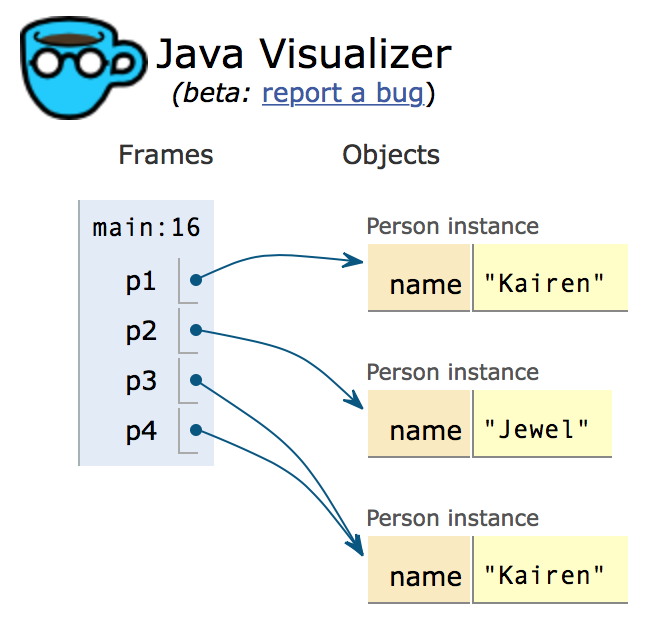📓9.7: Object Superclass
Table of Contents
📖 This page is a condensed version of CSAwesome Topic 9.7
Object Superclass
The Object class is the superclass of ALL other classes in Java and a part of the built-in java.lang package.
If a parent class isn’t specified using the extends keyword, the class will inherit from the Object class. But what exactly does a class inherit from the Object class?
The AP CSA Reference Sheet lists the two main methods that are most frequently used:
String toString()boolean equals(Object other)
toString() method
One commonly overridden Object method is toString(), which is often used to print out the attributes of an object. It is a good idea to write your own toString() method in every class. In a subclass, toString() can call the superclass toString() method using super.toString() and then add on its own attributes.
In the following code, the Person class overrides the toString method from Object method and the Student class then overrides it again. In each class the new toString method adds the new attributes from that class.
public class Person {
...
public String toString() {
return name;
}
}
class Student extends Person {
...
public String toString() {
return super.toString() + " " + this.id;
}
}
equals Method
One of the important methods inherited from Object is the equals(Object obj) method. This method is used to test if the current object and the passed object called obj are equal. But what does that mean?
As you can see if you run the code below, the equals method inherited from Object only returns true if the two objects references refer to the same object.
In other words, it does the same test as the equality operator
==.
public class Person {
private String name;
public Person(String theName) {
this.name = theName;
}
public static void main(String[] args) {
Person p1 = new Person("Kairen");
Person p2 = new Person("Jewel");
Person p3 = new Person("Kairen");
Person p4 = p3;
System.out.println(p1.equals(p2));
System.out.println(p2.equals(p3));
System.out.println(p1.equals(p3));
System.out.println(p3.equals(p4));
}
}

Overriding the equals Method
The equals method defined in Object and thus inherited by all classes only considers two object references equivalent if they refer to exactly the same object. But we saw in Unit 2 that the String class provides an equals method that considers two String objects equivalent if they have the same characters in the same order, even if they are actually different objects. How does that work?
It is because the String class has overridden the equals method it inherited from Object to provide a definition of equality that makes more sense.
As we saw in section 9.3 a class can override inherited methods by providing a method with the same method signature (method name, parameter types, and return type). String has done that with equals so when we compare String objects with equals that new method will be called instead of the inherited one.
String s1 = "hi";
String s2 = "Hi";
String s3 = new String("hi");
System.out.println(s1.equals(s2));
System.out.println(s2.equals(s3));
System.out.println(s1.equals(s3));
However, overriding equals is a bit more involved than overriding toString. While the toString method is only required to produce a reasonable human-readable String representation of an object, equals has to meet a more complex set of requirements in order to be useful.
💻 In-Class Activity: Savings Account
⭐️ Summary
-
The
Objectclass is the superclass of all other classes in Java and a part of the built-injava.langpackage. -
The following
Objectclass methods are part of the Java Quick Reference:String toString()boolean equals(Object other)
-
Subclasses of Object often override the
toStringandequalsmethods with class-specific implementations. -
When overriding
equals, it’s important to satisfy all the requirements of a correct implementation.
Acknowledgement
Content on this page is adapted from Runestone Academy - Barb Ericson, Beryl Hoffman, Peter Seibel.